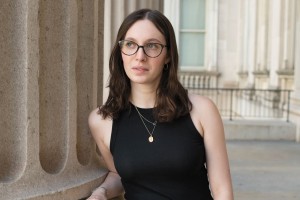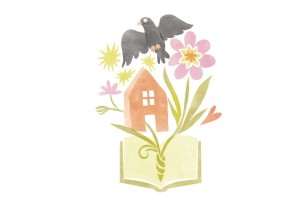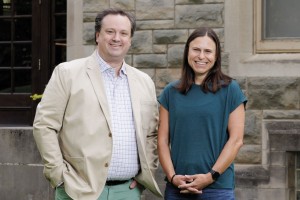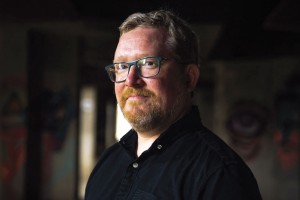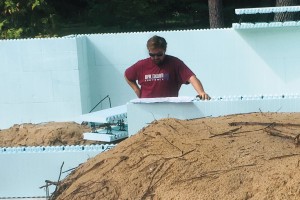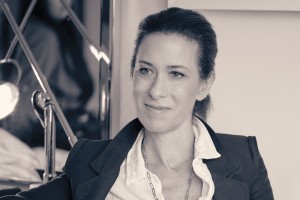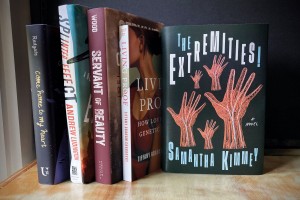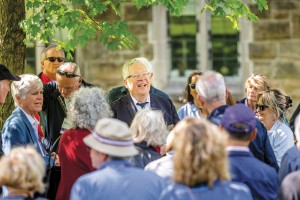The Kenyon Alumni Starter Kit
24 ways to reconnect, stay engaged and make the most of your Kenyon community.
Read The StoryDan Laskin, longtime writer and editor for Kenyon, offers a tribute to a mentor and friend.
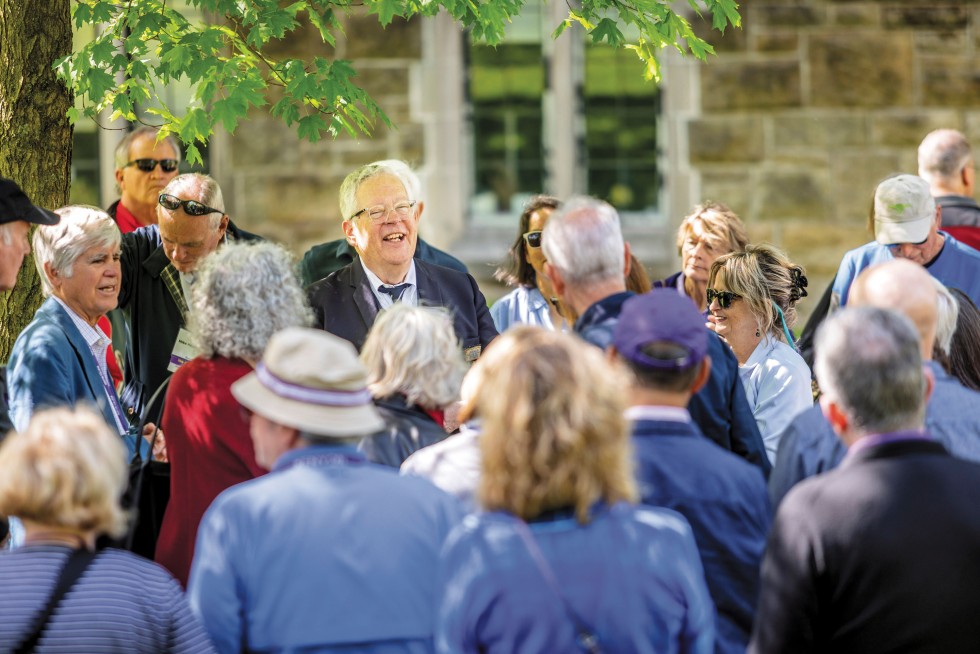
I met Tom Stamp ’73 H’22 not long after my wife, Jane, and I moved to Gambier in 1989, bringing our two toddlers from the East Coast. Tom was the director of what was then called the Office of Public Affairs. Before long, I was writing freelance pieces for him.
That was the beginning of what I consider a kind of apprenticeship under Tom, learning about Kenyon history, Kenyon culture, Kenyon people, and — in the realm of College publications — Kenyon style. In 1998, I got a full-time job in Tom’s office, and the apprenticeship intensified. Kenyon is a captivating place, and I came to see Tom as the curator of Kenyon’s ineffability: the magic that we all feel but that is hard to put into words. He was a role model for how to write about Kenyon — how to tell its story to both the on-campus community and the world at large — and for how to care about Kenyon. How to “get” Kenyon, while getting it right.
Tom seemingly knew everything about Kenyon. He knew its history, inside-out: the landmark events, the dates, the personalities, the disputes, the triumphs and travails. He had an encyclopedic knowledge of its architecture, a field he steeped himself in, passionately. He also knew, intimately, the village of Gambier, as a resident, as an astute observer and a sometime village council member.
Above all, he knew Kenyon people. When I worked on a feature, I could always count on Tom for suggestions on whom to interview.
Tom spoke slowly and deliberately, with long pauses as he consulted his memory or sought the right word. At staff meetings, I had to learn not to interrupt him. I also had to get used to Tom’s brand of quiet seriousness. On the other hand, I discovered that at home Tom was charming, amusing and gregarious. He relished conversation, which always included books, and he hosted wonderful parties — including gatherings of the idiosyncratic Gambier group, Friends of Martinis, for which Tom served as impresario and mix-master.
As an editorial colleague, I both valued and affectionately chafed at Tom’s formality in writing. It wasn’t just that he spurned split infinitives, even when they made the sentence sound more natural. In phrasing, he could be gentlemanly to a fault. And he was a stickler for institutional style. The bible was the Chicago Manual of Style (since replaced by AP style), and there were Kenyon-specific elaborations to go with it. If you were writing about political science at the College, you said “Department of Political Science” — capitalized, because that was the official name — but “political science department,” lowercase, because that wasn’t the official title. Almost as a reflex, Tom would remind you that it was Acland, not Ackland; Chase Tower, not Peirce Tower — and, for heaven’s sake, it’s Peirce with the “e” before the “i.”
The precision he brought to his writing, and his willingness to go on at length, made him seem old-fashioned in a media world that increasingly values slick concision, word-light layouts, bite-size social media postings and memes. Tom made his career in a time of greater attention spans. In retirement, he surrounded himself with stacks of books in a tiny office in Treleaven House, tending to an array of Kenyon projects. It saddens me to think of those projects left behind.
I retired from Kenyon some years ago, and my contact with Tom contracted to occasional lunches at the Kenyon Inn. He would ask about Jane and my sons, now both grown. He’d recommend books. And he never ran out of information about Kenyon. Really, it was always that way with Tom, the twinning: of Kenyon in its fullness and of friends.
24 ways to reconnect, stay engaged and make the most of your Kenyon community.
Read The StoryLooking back at the work and legacy of Graham Gund ’63 H’81, who died in June.
Read The StoryMeet the alumni entrepreneurs, makers and innovators reshaping the food business.
Read The Story